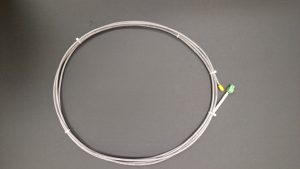What Is Distributed Temperature Sensing?

The quality and layout of wire and cable is extremely important for information technology systems. All it takes is for one wire to be loose, or one cable to be damaged from heat or improper equipment placement, and the entire system is at risk for failure. In addition to dust and damage, heat is a major threat to information technology wire and cable. That’s why many data centers spend so much money installing and perfecting climate controls. Temperature sensing technologies are another way that data specialists make sure wires and cables aren’t getting too hot or too cold, which is why we manufacture them in-house at Paradise Cable Industries. No matter whether the setting is a data center or a factory, let’s take a more in-depth look at these devices and how they function.
Conventional Temperature Sensing
Traditional temperature control systems use specific point measurements. Information is gathered from individual sensors and gauges that are placed at specific locations throughout a wire or cable system. Think about this like testing water quality: if you want to test the level of chlorine in your water, one option would be to take a sample of the water coming out of your faucet. This would be a specific point measurement. Conventional temperature sensing faces significant limitations in the areas of speed, accuracy and resolution.
Distributed Temperature Sensing
Distributed temperature sensing is an alternative to traditional, single point measurements. In this type of system, temperature and pressure levels can be monitored at intervals of a few feet throughout the entirety of a wire and cable system. Using optical fibers housed in a protective sheath, reflections from a laser are used to detect temperature and strain all along the wire.
Want to know more about the electronic assemblies and temperature sensors we make here at Paradise Cable Industries? Contact one of our expert consultants today.

Recent Comments